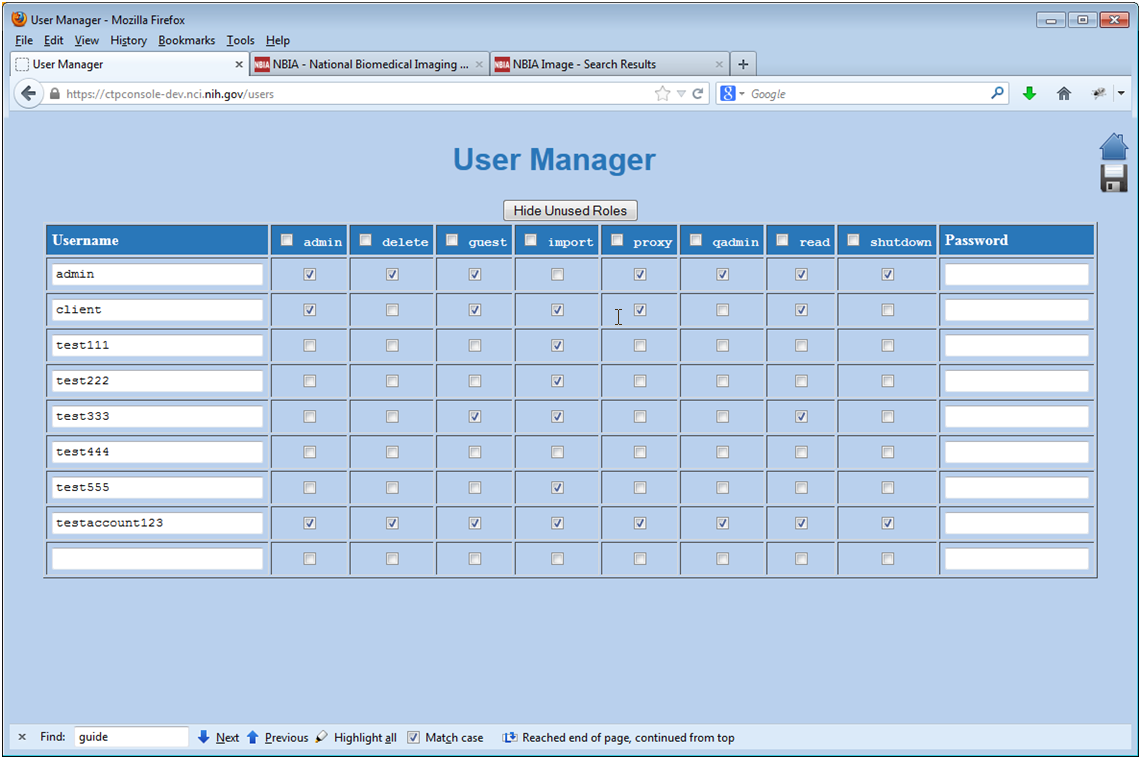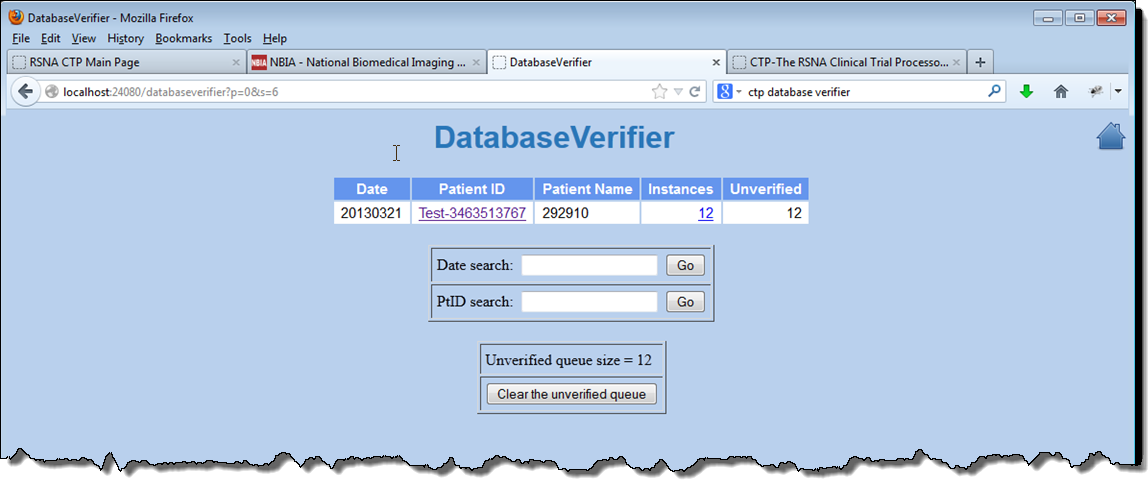 |
Page History
...
| Table of Contents | ||
|---|---|---|
|
Configuring the CTP Server
| Info | ||
|---|---|---|
| ||
|
...
After installing the CTP client and server, to activate the user authentication in file submission, modify
config.xmlin the CTP_Client\CTP directory. By default, both the username and password are set to "client". Specify the username and password inExportServiceandDatabaseVerifiersections as follows:Code Block <DatabaseVerifier class="org.rsna.ctp.stdstages.DatabaseVerifier" name="DatabaseVerifier" password="client" root="roots/DatabaseVerifier" url="https://127.0.0.1:1111" username="client" password="client"/> <ExportService name="HTTP Export" class="org.rsna.ctp.stdstages.HttpExportService" root="roots/http-export" username="client" password="client" url="https://127.0.0.1:2222"/>On the CTP server, a new user must be created with the same username and password defined in
config.xmlof the CTP_Client\CTP directory. A "User Manager" in the CTP server given the "import” role can perform this task. The following figure shows the page on which the user manager creates new users:- Use the CTP Database Verifier, shown in the following figure, at the submitting site to ensure that all transmitted data made it into the NBIA database. More information about the CTP Database Verifier can be found at the MIRC Wiki.
Multiexcerpt include MultiExcerptName ExitDisclaimer nopanel true PageWithExcerpt wikicontent:Exit Disclaimer to Include While installing NBIA, make sure the following points outside of the NBIA Installation folder to avoid wiping the database.
Code Block application.base.path.linux = REPLACE_THIS e.g /usr/local/apps/ncia6_0 application.base.path.windows = REPLACE_THIS e.g /usr/local/apps/ncia6_0 ctp.server.storage.service.index = REPLACE_THIS e.g usr/local/apps/ncia/CTP-Server/CTP/Storage ctp.server.storage_service.root = REPLACE_THIS e.g usr/local/apps/ncia/CTP-Server/CTP/Storage/root
After installation, check your CTP server. In the
config.xmlfile belonging to the CTP server, make sure that the root points to a directory outside of CTP Server. "Root" field is where the CTP submission files are stored.Code Block <StorageService root="/data/dataset_d01/root" [Change This] </StorageService>
Starting NBIA
| Anchor | ||||
|---|---|---|---|---|
|
Note that if Tomcat and CTP are not installed as services, they must be manually started/re-started. The following files start the respective servers.
...
- Tomcat:
<installed-directory>/apache-tomcat-7.0.68/bin/startup.sh
- CTP:
<installed-directory>/CTP-server/CTP/ctp.sh
Creating an LDAP Account for NBIA
The way that NBIA is configured during installation determines the way NBIA administrators create users. All new users must already exist in LDAP to use NBIA. The NBIA administrator can use the NBIA User Authorization Tool to add new NBIA users using their LDAP login names.
...

